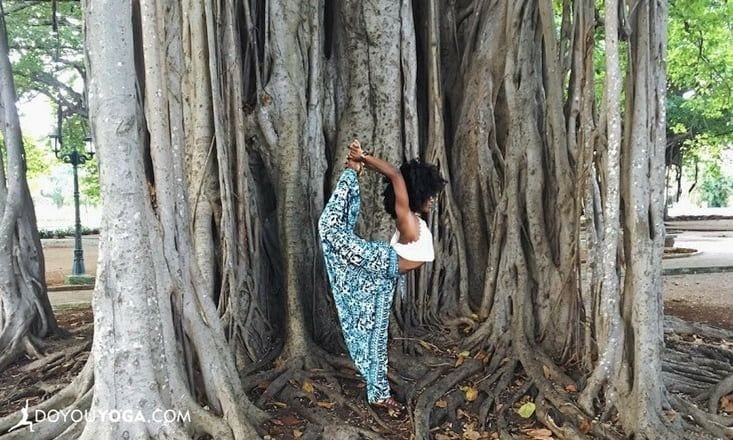These Are The Most Popular Yoga Styles in the World
The DOYOU Global Yoga Survey gave us insights on how people practice yoga worldwide, including the popular yoga styles they practice. Read more here.
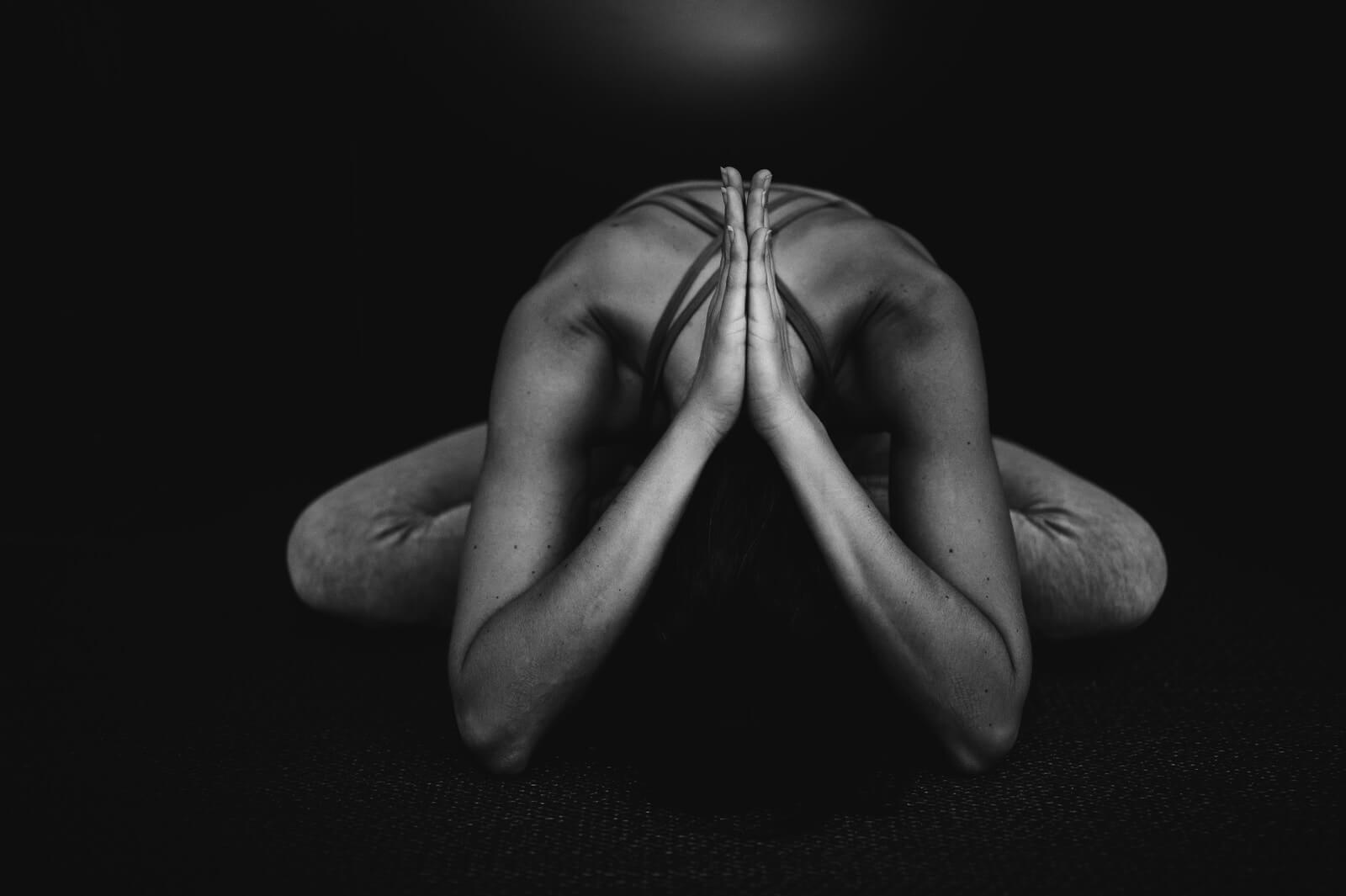

Yoga is a multifaceted practice that spans centuries and borders. The origins of yoga are rooted in Hinduism and Buddhism but the community welcomes any person who wishes to try. It's fitting since "yoga" comes from yuj which means to unite or join - uniting your mind with your body! Yoga is a way for the body, mind, and spirit to come together in harmony.
The wide variety of styles and poses can help facilitate your yoga practice so you can get the most out of it. Each yoga style, although different physically and historically rooted in a variety of philosophies, is based on one common theme: leading happy lives.
And the best part? Anyone of any age, gender, or physical ability can practice yoga. It's not just for the flexible, it's for anyone who wants to cultivate their health, inner peace, and calm.
Yoga is a great way to stay active and healthy, and it's never too late to start.
Engaging in regular yoga practice brings numerous benefits to your mind and body. Some of the benefits include increased strength, flexibility, and muscle tone in addition to improved mental clarity, pain relief, and a reduction in stress levels and blood pressure.
Let's have a closer look at what yoga can do for you.

If you have been looking for a way to get into yoga but don’t know where to start, this is the perfect program. Designed by one of the world’s leading yoga instructors, Kristin McGee, this program will help you feel comfortable in each session.

The 28 Day Yoga for Beginners Program has everything that beginners need. This course is designed for the complete beginner, so if you have no previous yoga experience there’s nothing to worry about. It will guide you through each step of your journey with easy-to-follow instructions.
Moreover, Kristin’s approachable style of teaching will make you feel like she is your friend guiding you on your first steps so there’s no pressure involved at all!
This free yoga program for beginners might just be exactly what you needed right now: A fresh start – one filled with peace and balance as well as renewed energy levels, emotional stability, strength both physical and mental.

Like all art forms, yoga is continuously transforming. This has given rise to countless yoga styles practiced worldwide. Below is a brief description of some of the most popular yoga styles.

Hatha, which means force in Sanskrit, is a blanket term referring to all physical yoga practices. When people use the term Hatha to refer to a specific type of yoga, they are describing a practice that involves the breath, body, and mind. Practitioners hold poses, or asana, for several seconds or minutes. This promotes controlled breathing and meditation.
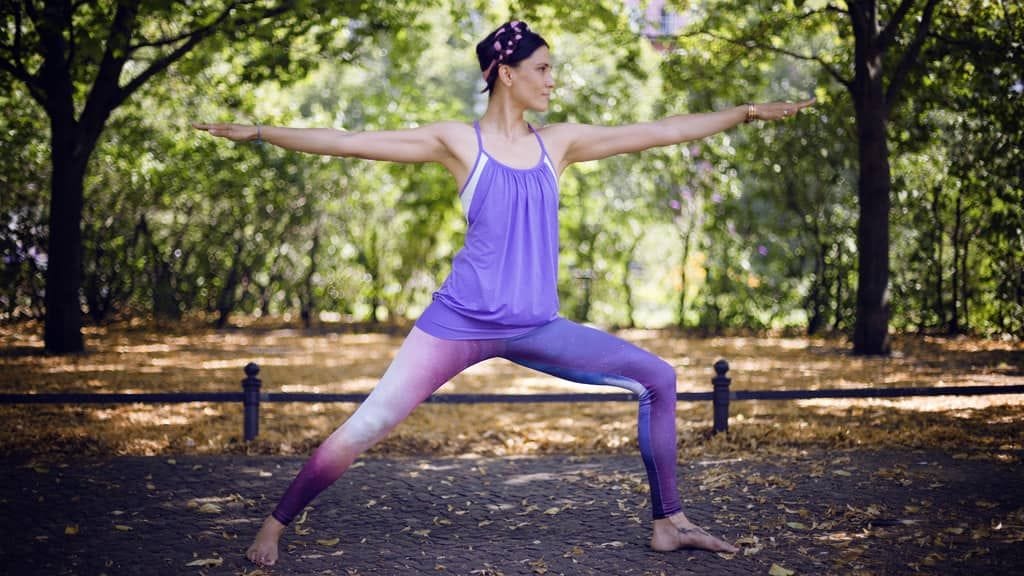
Vinyasa Yoga, sometimes called vinyasa flow in the West, is a type of yoga that has over 5000 years of history. It is characterized by smooth transitions between poses. People pair movements between poses with breathing. There aren’t specific sequences or poses that define Vinyasa Flow, so the experience changes between instructors.
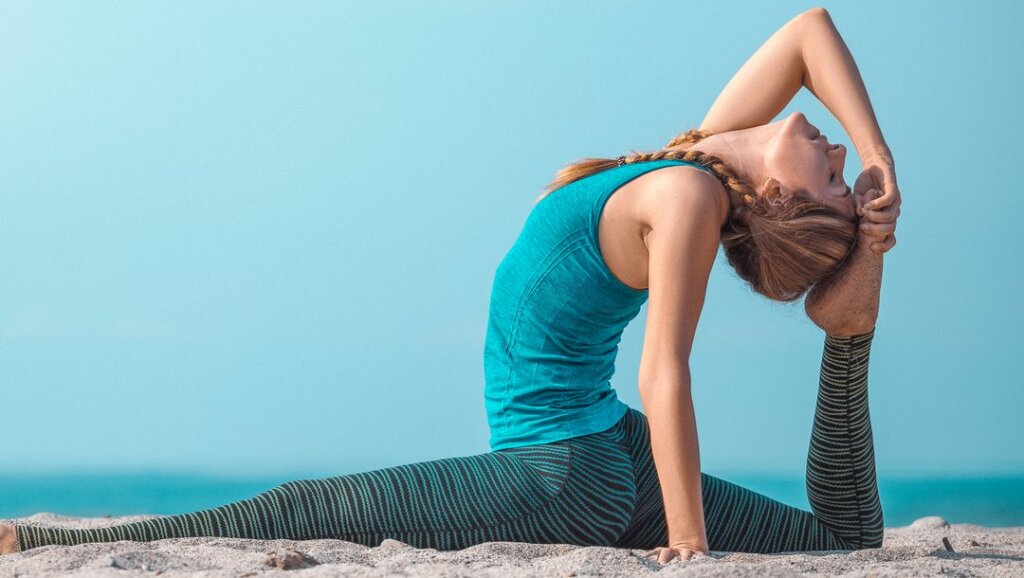
Ashtanga Yoga or Ashtanga Vinyasa Yoga is a type of Vinyasa yoga where movements between poses are synchronized with inhales and exhales. What defines ashtanga yoga is the sequence of energetic and athletic postures. Pattabhi Jois popularized this type of yoga. The current style of teaching ashtanga yoga is called Mysore Yoga.
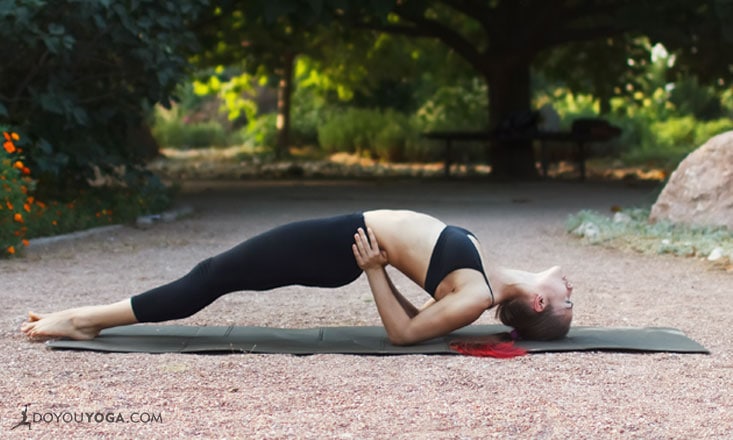
Power Yoga is inspired by the Ashtanga Vinyasa Yoga style. Several yoga specialists developed iterations of this yoga style in the United States in the 1990s. Power Yoga is a style that coordinates breathing with movements and sequences that activate muscles. While the ambiance varies between classes, Power Yoga practices are often accompanied by loud music.
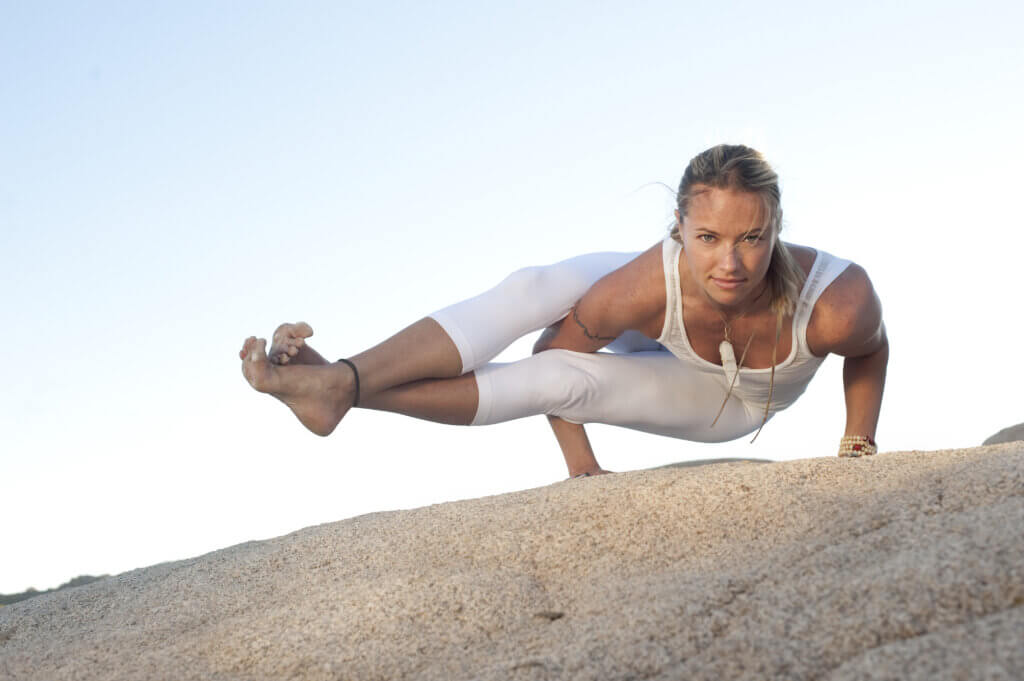
Hot Yoga or Bikram Yoga is a structured yoga style where specific yoga postures are practiced in a heated, humid room. Because the body uses more energy at warm temperatures, many people choose to practice this type of yoga to burn extra calories. Prepare to sweat a lot! Bring some extra water to stay hydrated.
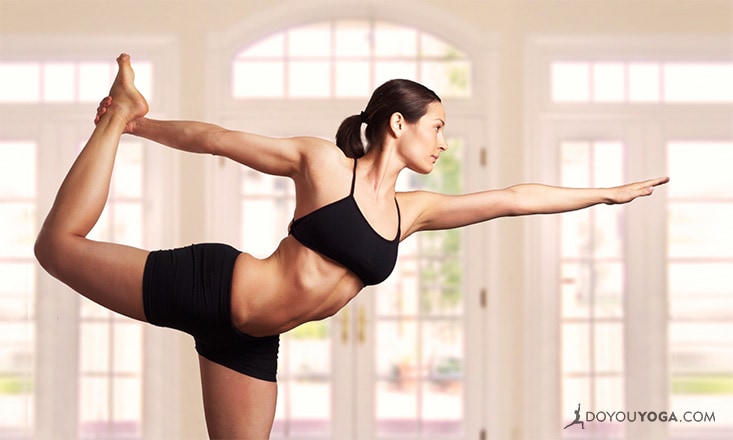
Iyengar Yoga is a style of yoga that helps to improve the body’s alignment. It also helps to improve posture, balance, flexibility, and strength. Props, such as straps, blocks, belts, and blankets act as aids in supporting the body during postures to lessen the risk of straining muscles. Iyengar Yoga is beneficial for beginners, people with injuries or physical limitations, and for older adults.
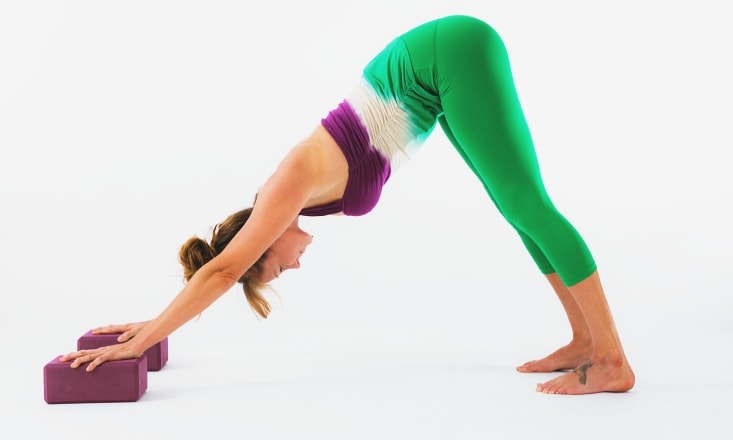
Restorative Yoga is a restful yoga style that aims to help practitioners relax, destress, and unwind. It opens up the body through passive stretching. Unlike most other yoga styles, it involves limited strength poses. Restorative Yoga classes involve focused breathing, meditation, and light stretches. Practitioners can use blocks, pillows, and bolsters to help people relax. The ambiance often has dim lighting and instrumental meditative music.
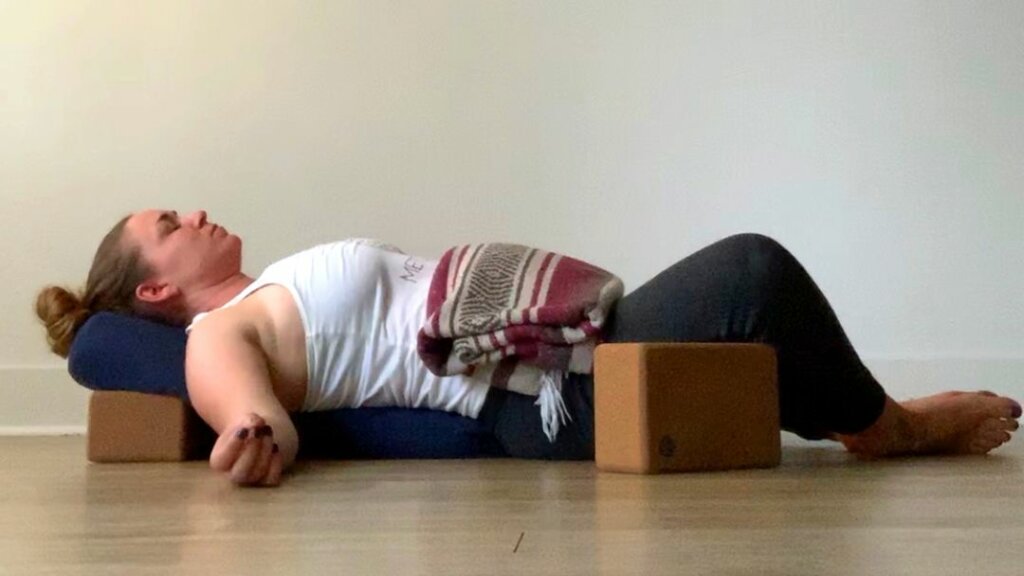
Yoga experts refer to most popular yoga styles as “yang” yoga, or yoga that is powerful, strength-building, and fast-paced. Yin Yoga, which is based in Taoist practices, helps to balance the effect of yang yoga styles on the body’s energy, or Qi. Rather than focusing on muscles, Yin Yoga activates the connective tissues. More specifically, it activates bones, joints, ligaments, and fascia, which is the thin casing around organs. Yin Yoga targets deep tissue and joint activation by holding postures for several minutes. It enhances flexibility and reduces stress levels.
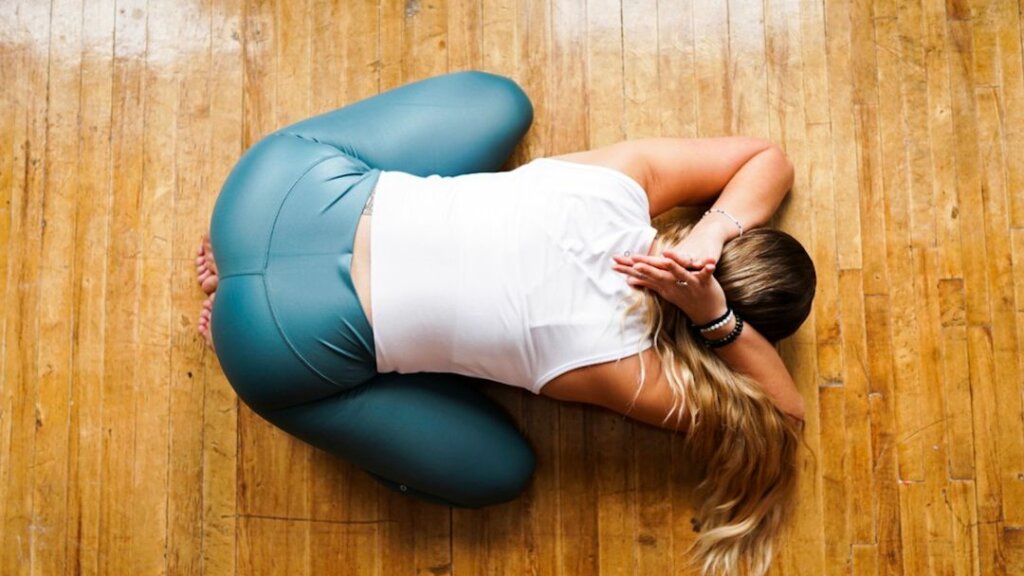

Child’s Pose is a great way to begin or end a practice and it is your go to rest shape if you need to take a break mid class
Benefits: Child's pose stretches your back and ankles and provides a moment to turn in.
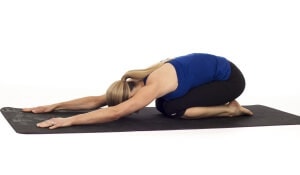
Tip: Rock your head side to side to get a calming massage on your forehead and warm up your neck muscles.
Modifications: If your knees are tender or if you feel stiff, put some padding under your knees. In addition, you can also put a pillow between your calf muscles and thighs. This will encourage more space. Another great modification you can do is to place a block under your forehead. What also works is a big pillow under the length of your torso so that you can rest your whole body and head on it.
Keep in mind: If you have knee problems this may not be the shape for you. You can always sit meditatively or use downward-facing dog instead.
This all over body stretch feels great on tight muscles.
Benefits: Downward-facing dog strengthens the arms, shoulders and back. Moreover, it stretches the hamstrings and calves. The bent knee version is a great way to relieve back pain too.
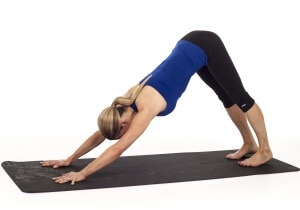
Tips: Focus on distributing the weight evenly through your palms. Lift your hips up and back away from your shoulders to pull the weight out of your wrists and shoulders.
Modifications: You can do the pose with your elbows on the ground. You can also use blocks under your hands which takes the weight off your wrists.
Keep in mind: This pose is not recommended if you have carpal tunnel syndrome, or other wrist problems. Similarly, it's also not recommended if you are in the late stages of pregnancy.
Perhaps the best prep pose in yoga, but also a challenge by itself!
Benefits: This is a great shape to strengthen the entire body. Further, it can also be modified for wrist pain using your forearms and you still get the exact same benefits.
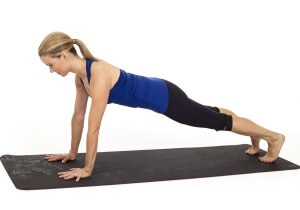
Tips: Pull (or wrap) all your muscles towards your center. Push the floor away with your hands (or forearms) and feet. Maintain a slight lift in your hips to avoid dipping down at the waist, which might strain your low back.
Modifications: If you find yourself hunching forward through your shoulders, you can lower your knees to the ground. This will remove some of the weight from your upper body and back.
Keep in mind: If you have a sore low back or shoulders, lower your knees until your core is strong to support your back.
This is the pause between plank and lying on the floor, often referred to as Chaturanga or low plank. It is also used as a transition instead of a hold, especially when first starting to build strength.
Benefits: This shape is incredibly strengthening for the whole body.
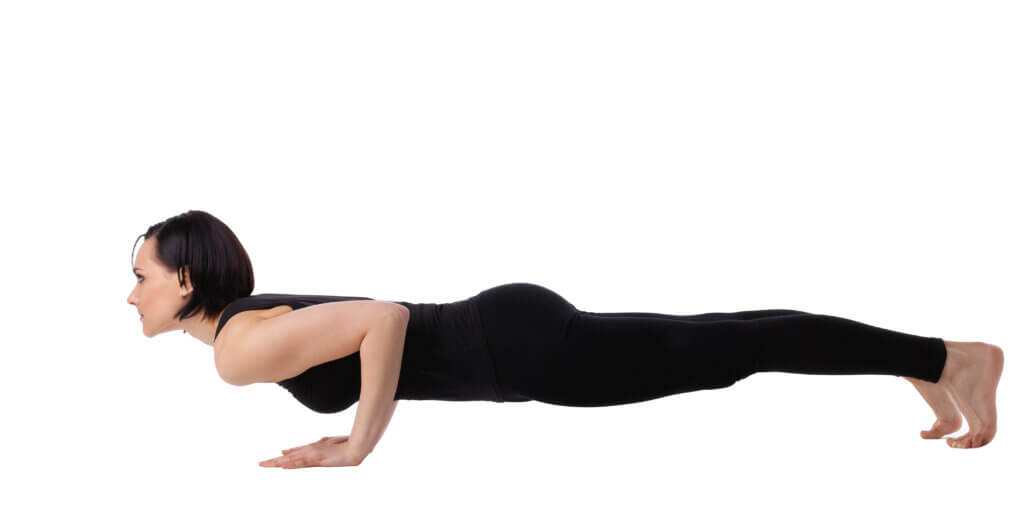
Tips: Keep your core engaged, your elbows tucked in towards your ribs. Keep your elbows back over your wrists as much as possible.
Keep in mind: If your hips begin to sink, lower your knees to protect your lower back, shoulders, and wrists.
This may look simple but it is not just standing still. Mountain pose is the foundation of many other shapes.
Benefits: This shape is about finding healthy posture. And having better posture boosts our confidence levels. In addition, it relieves aches and pains in the body from hunching forward over a desk, phone, or computer.
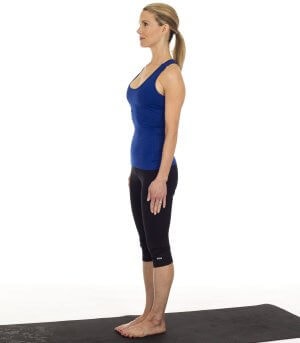
Tips: Imagine the top of your head lifting up to the sun like a blooming flower.
Keep in mind: The adjustments in this shape are tiny. You’re not thrusting your hips forward or ramming your chin into your chest. The movements are very delicate.
This classic shape is simple and will strengthen the entire body.
Benefits: Tree pose stretches the interior hip and works on calming the mind. All balancing shapes encourage core strength.
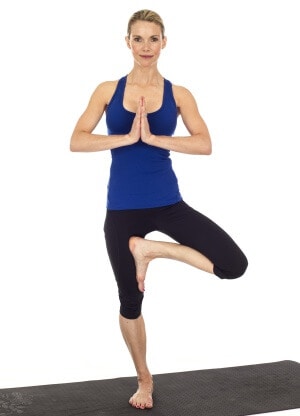
Tips: To stay balanced, firstly, fix your gaze on one unmoving object. Secondly, press your foot into your leg and your leg into your foot equally. Once you feel comfortable, press your raised knees back and raise your arms above your head.
Modifications: If holding your balance is challenging, start with your foot on your ankle instead of your calf muscle.
Keep in mind: You never want your foot to be on your knee joint. Certainly, pressing on your knee joint is both unsafe and unhealthy.
A powerful stance that stabilizes the mind and creates intention.
Benefits: Warrior II strengthens the muscles around your knees and stretches the hamstrings.
Tips: When looking at your back foot the arch should be in line with the heel of the front foot.
Keep in mind: In Warrior II, you always want to be able to see your toes in front of your knees as this keeps your bent knee safe.
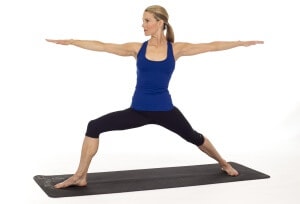
A continuation of Warrior II that brings more focus on lengthening the body.
Benefits: Triangle is wonderful at strengthening the muscles of the back.
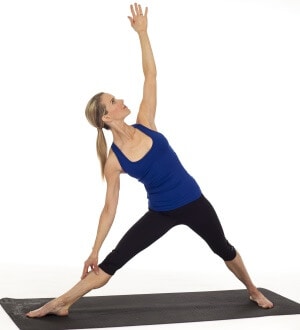
Tips: Let the movement come from your hips instead of your waist. You can do this by elongating your torso and pushing through both feet.
Modifications: Use a tall block under your lower hand to push the floor away. Lift your torso up until you are strong enough to hold it yourself.
Keep in mind: Bend your knees gently to protect your hamstrings. Place your hands on your hips to help your back out.
Cobra is a great stretch from the hips all the way up to the chest.
Benefits: Cobra will help stretch the entire front of the body. Similarly, it will stretch the abdominals and hips after a workout. It is also a great way to stretch the front of the chest and shoulders.
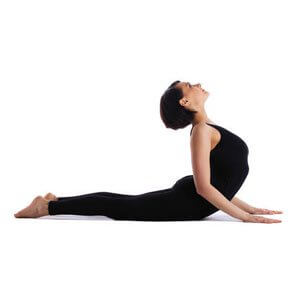
Tips: Stay low, you should be able to lift your hands off the floor and still keep your body lifted up.
Modifications: Try to bring your feet together and spread them out to see which feels better on your back.
Keep in mind: The benefits are in stretching the font body, not stressing out the lower back. If your back is tender, choose child’s pose or downward facing dog instead.
A wonderful shape to hold at the end of your practice to cool down.
Benefits: Use this shape to stretch your frontal hips, thighs and abdominal muscles. Bridge also strengthens the back muscles and hamstrings.
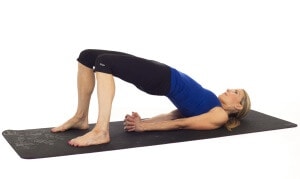
Tips: To strengthen your hamstrings, put a block between your knees and hold it there.
Modifications: Put a couple of blocks under your hips and rest to give your low back a little extra support.
Keep in mind: Your heels should line up, and they should be directly under your knees. This will help you make the most of the pose, and it will help you avoid injury. The best way to check is by doing the pose in front of a mirror and adjusting your body accordingly.

Yoga-teacher-to-the-stars, Kristin McGee, will get you started with your at-home yoga practice through this full length online workout.
Grab 1-2 blocks for this head to toe, lengthening, and opening yoga routine. These easy yoga stretches focus on specific areas that are often less flexible. Release tension, increase mobility and flexibility with this yoga workout for beginners.
Learn what yoga exercises can help you burn fat and build energy. One of the world's leading yoga instructors, Kristin McGee, shares how this full-length workout routine will amp up your stamina in no time at all!
Celebrity yoga coach, Kristin McGee, will make you feel relaxed and comfortable right at home in this full length online at-home yoga class.
This basic yoga class is designed to help decrease stress using a delicious slow flow. It is perfect yoga for complete beginners. Discover how to do yoga at home to expand your body and calm your mind. Kristin reminds us to always move at our own pace and breathe whenever we practice yoga.
What should you wear when you practice yoga? How should you breathe? When's the best time to do yoga? Here are some tips to make your yoga practice comfortable, mindful, and nurturing.

Check whether you feel more active in the morning or afternoon. Then practice during that period. If you feel resistant in the morning then it’s better to practice at lunch time or in the afternoon.
Many lineages suggest practicing daily for 15-30 days to create a new routine. However, most athletes will tell you that a day of rest here and there is optimal for the body. This is especially true when you are new to a practice. Doing yoga 2-3 times a week is a great starting point. The amazing Kristin McGee shares some more insightful tips to get you started on your yoga practice.
You’ll encounter different breathing techniques in your future practicing yoga. In beginner yoga, the only one you need to think about is Oceanic Breathing, or Ujjai Breath. Allow the breath to flow in and out smoothly like an ocean’s wave. If you want you can even count to 3 or 4 for each inhale and again for each exhale. Yoga-teacher-to-the-stars, Kristin McGee, shares helpful tips on how you can breathe properly while practicing yoga.
There is no real uniform in yoga except bare feet. Wear something comfortable to move in. Stretchy pants and a comfy shirt work well. Many yoga students choose tight fitting athletic wear because this type of clothing won’t move when you turn upside down. It’s all optional. Listen to more tips from one of the world's leading yoga teachers, Kristin McGee, so you can start your practice with much comfort and ease.
Yes! Anyone can do yoga. Yoga is wonderful for increasing flexibility and strength and boosting health and immunity. It is for everyone. World-renowned yoga teacher, Raghunath, shares why you should start doing it now.
We hope this helps make your journey into the world of yoga more exciting and less overwhelming!
And if you want more information on how The 28 Day Yoga For Beginners Program is helping others like you find success in practicing yoga every day, sign up here to start your journey on a new path to physical and mental well-being!

Nysandra from USA
Joined the 28 Day Yoga for Beginners Challenge 12 weeks ago
The DOYOU Global Yoga Survey gave us insights on how people practice yoga worldwide, including the popular yoga styles they practice. Read more here.

Wondering if you can use yoga for strength training? Is there a way to practice it so that you keep building muscle? You ask, we answer.
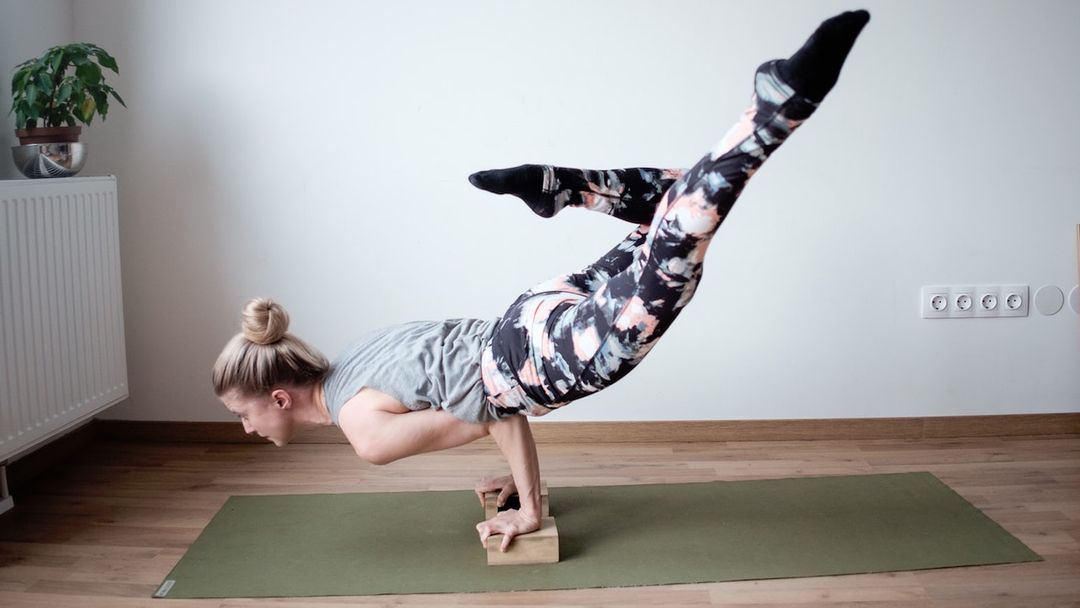
The non-profit Yoga For First Responders is changing the perception of yoga and practically applying yoga’s tools for first responders – so that our Warriors can improve their performance on and off the job.
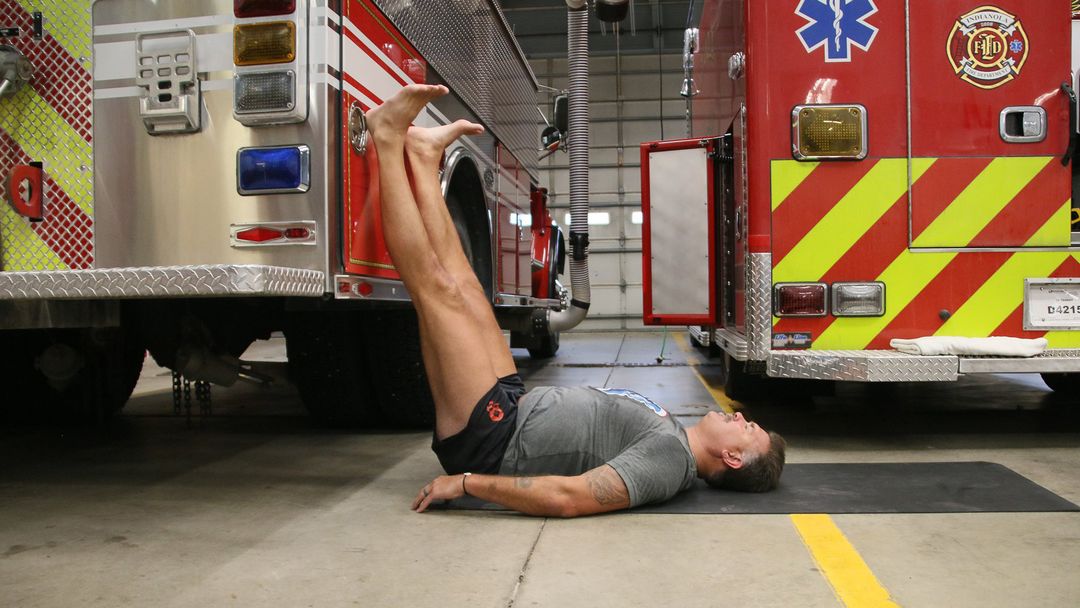
Working to increase your muscle strength can help you improve your ability to achieve poses while maintaining alignment and integrity. Here are 5 strength training exercises you can use to increase your muscle tone and strength and improve your asana.
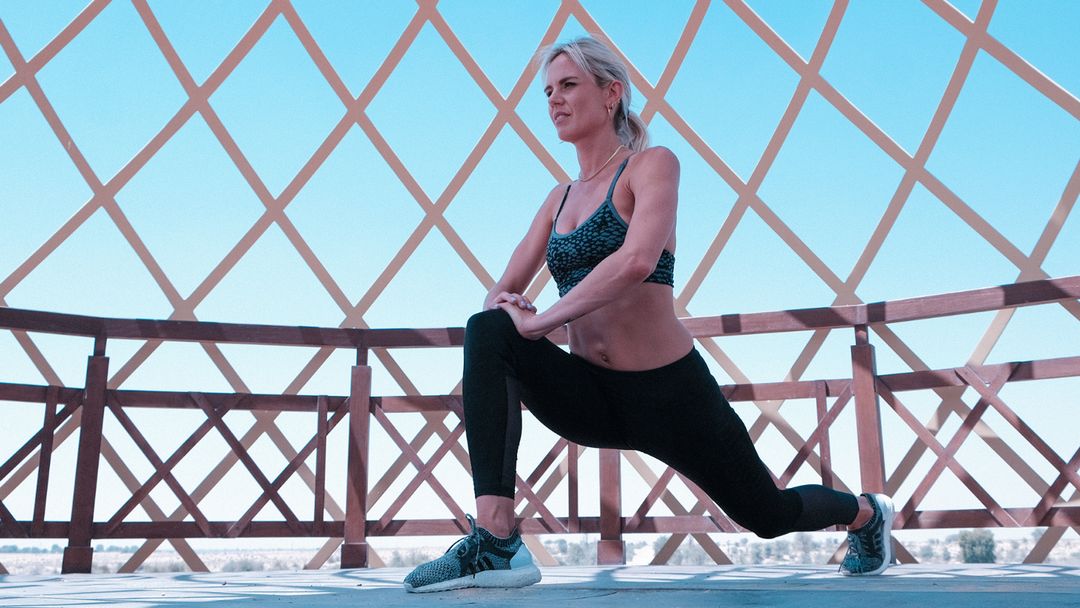
We hear all the time to take micro bends in our knees and elbows to protect our joints, but that will only get you so far. Read on for 5 essential yoga modifications and adjustments to counteract hypermobility!
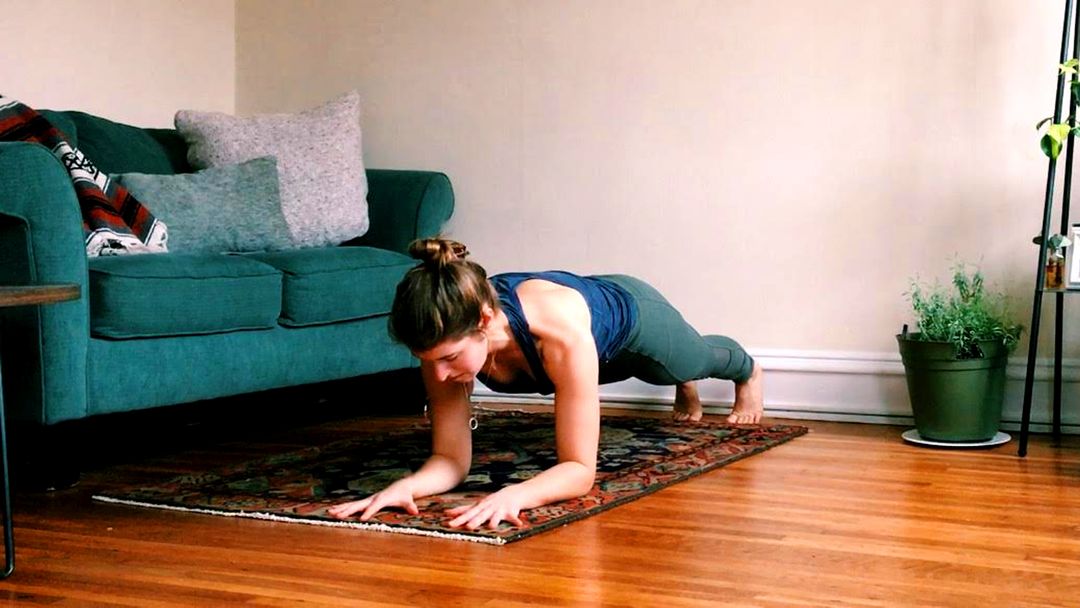
Expressing, receiving, and feeling gratitude has so many physical, mental, and spiritual benefits. Cultivating gratitude on your mat will change the way you move through your yoga practice, and the good karma you create will come with you off your mat and into your world. Read on to learn about four ways gratitude will transform your yoga practice and life.
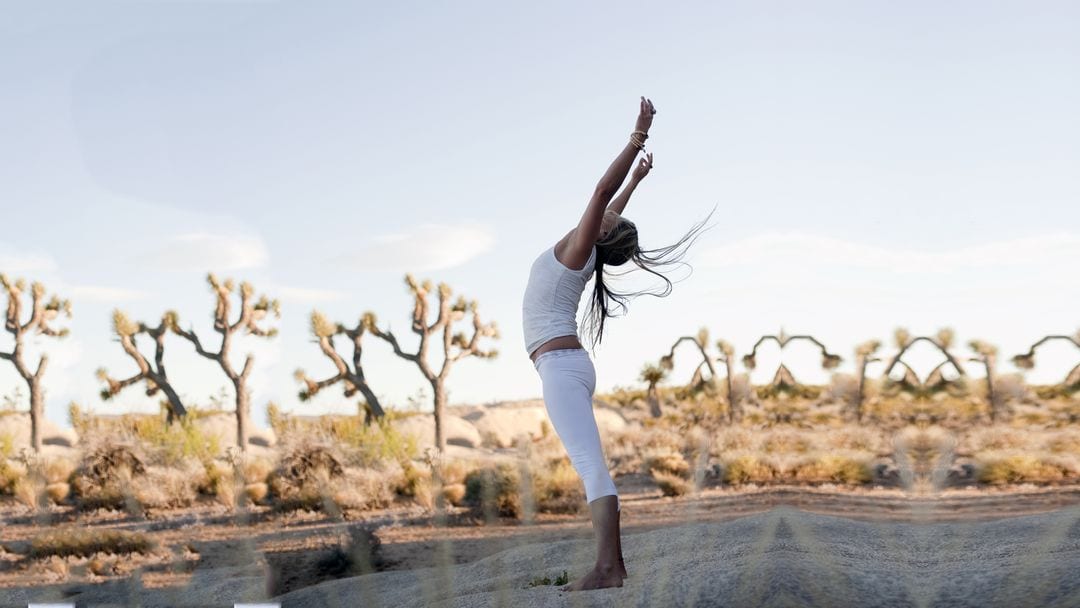
If you are looking to fire up your practice, try this ultimate yoga sequence! Designed for practitioners who have a strong foundation of personal practice and solid baseline of strength and balance, this sequence will help you reach a new level. Take breaks whenever you need and modify to your body.
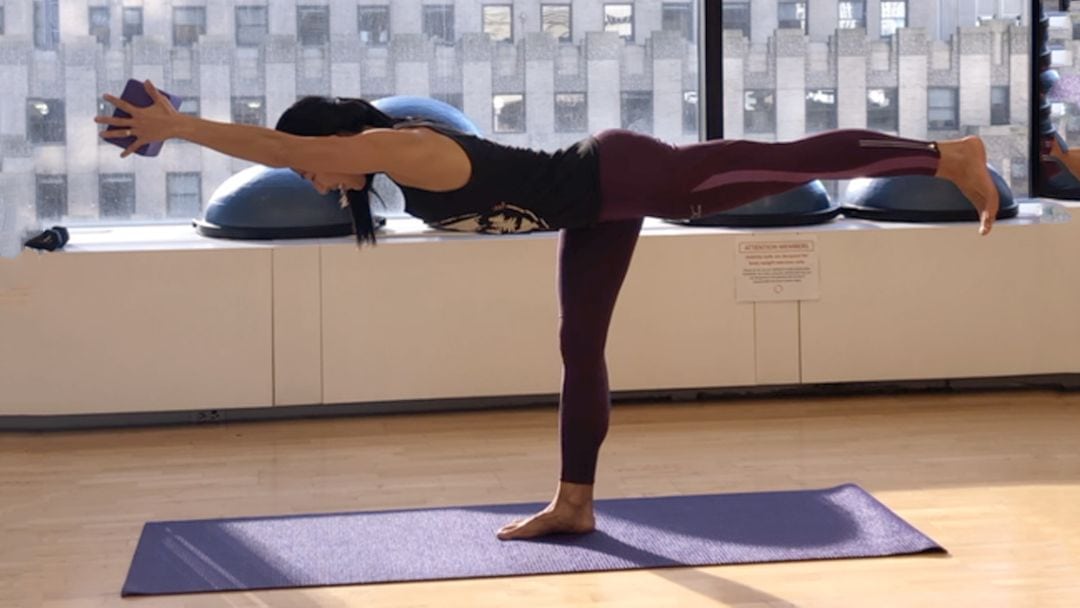
You don’t have to have full splits to practice the pose, but you do have to practice the pose in order to have full splits! This guide will help you step by step to find many variations in order to work closer to full splits
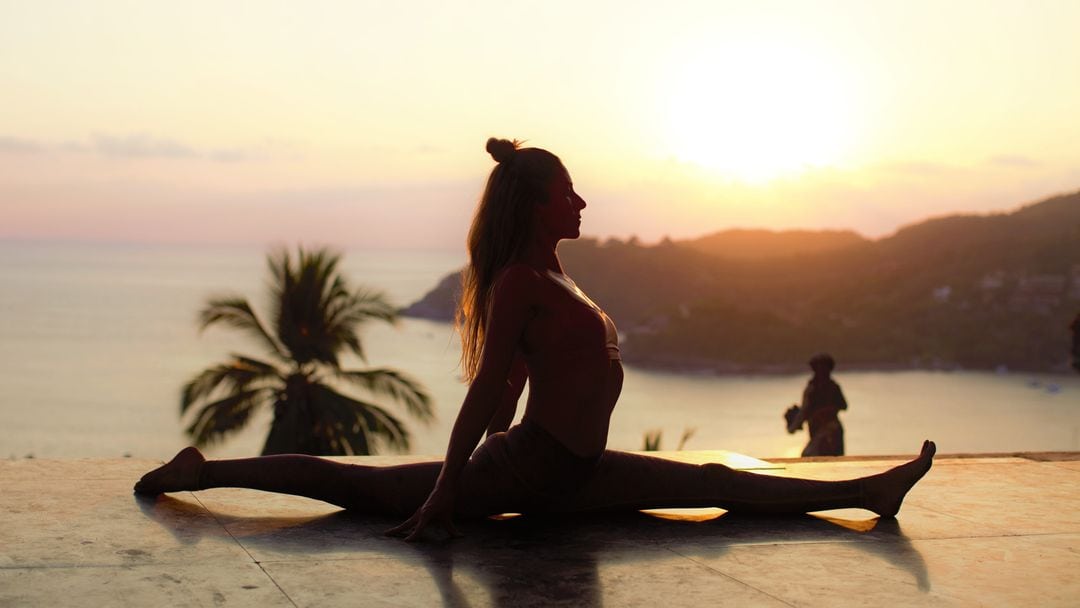
Yoga is more than just a body-based wellness practice. Its power extends to the realms of the mind, inspiring us adopt a focused, determined approach to all pursuits in life. When yoga is the foundation, the sky’s the limit!
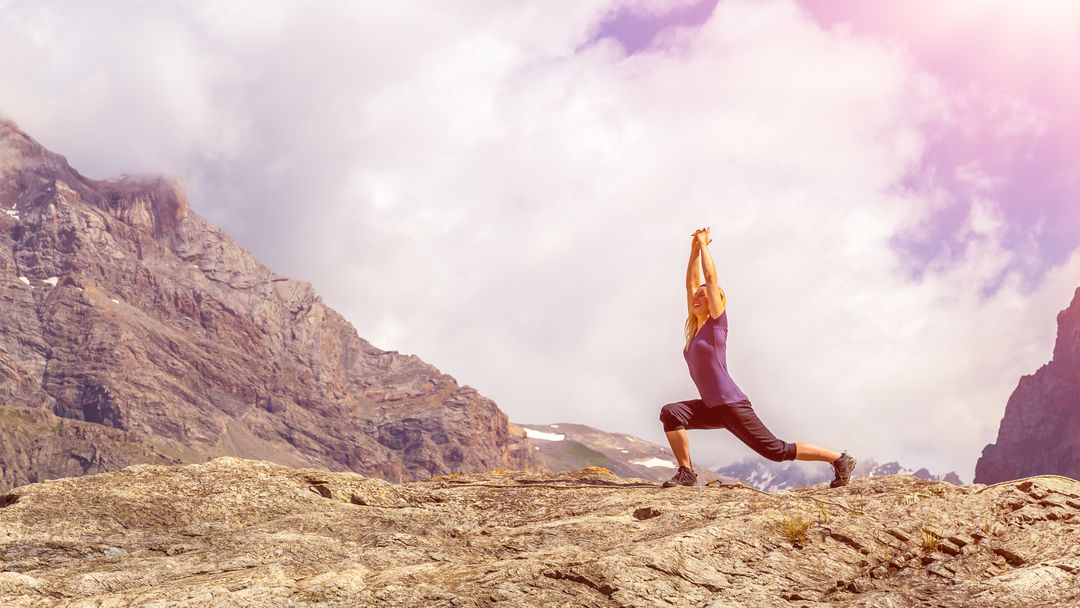
In today’s self development obsessed world, it’s easy to feel a constant lack of, the need to be more this or more that. What if you’re actually perfectly fine? Incredibly inspiring and whole just as you are. We’ve curated a list of 25 gentle reminders to build your confidence and get you excited for the potential of the day that awaits.
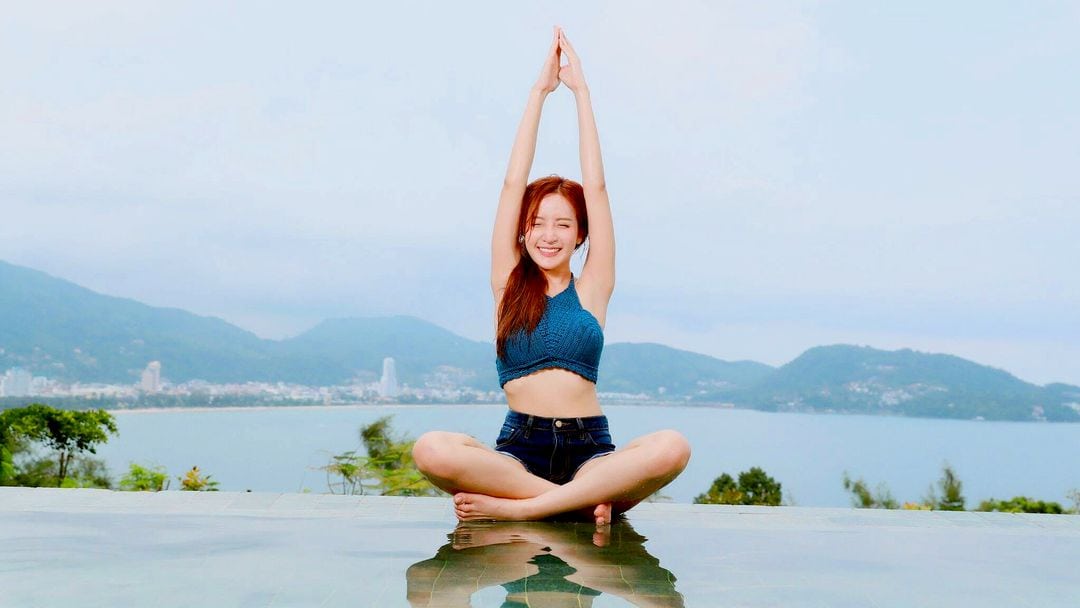
If your intention is to cultivate a life where your confidence shines through and guides the way, then you will likely need to wake up each morning and clarify that objective for the day ahead – and not just with mantras spoken into a mirror- with action! Here is a mini routine you can add to your morning, to allow your confidence to begin glowing as soon as the sun rises.
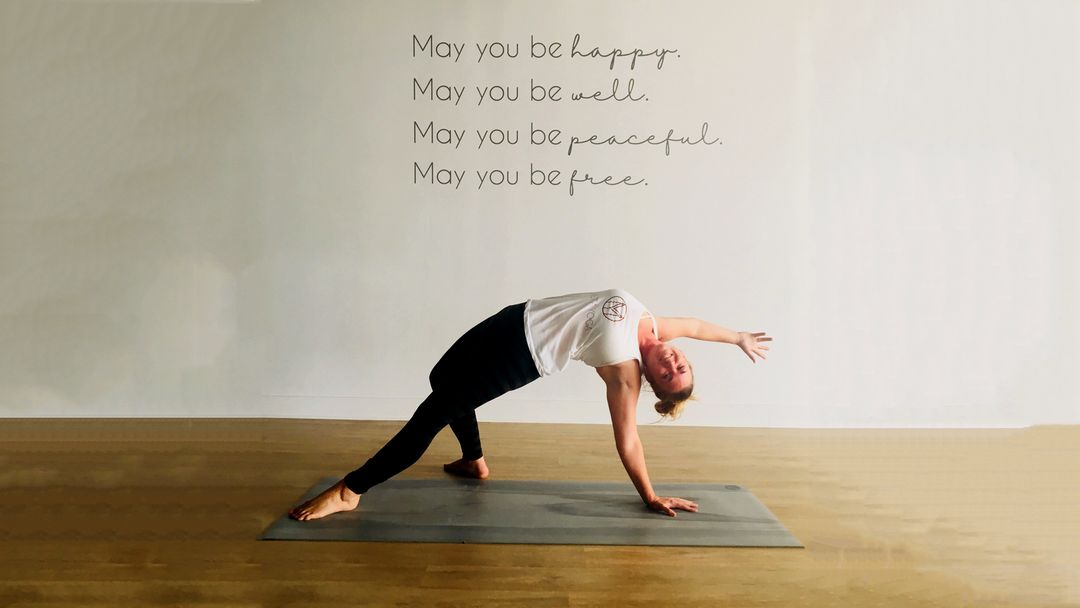
The practice of yoga encourages a dissolution of the ego, so that we can truly feel into the present moment without attachment or aversion, including an acceptance of where our physical body is in that time and space. It is thus a great practice for feeling that our physical limitations are not limitations at all, but instead an experience from which we can feel empowered to find space and strengt
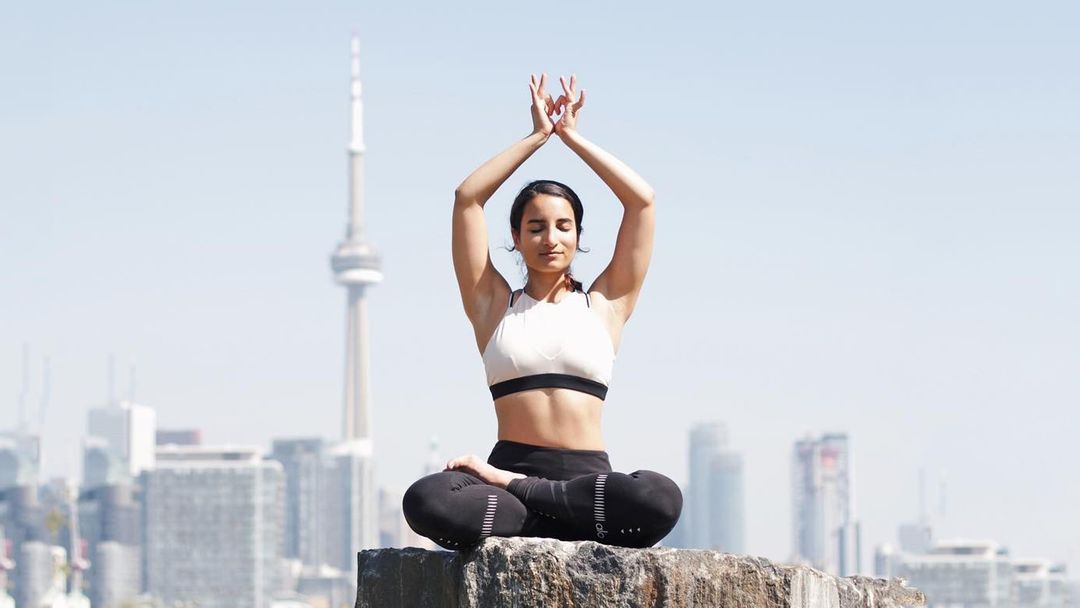
While practicing with a yoga teacher is a very important part of the yogic tradition, there comes a time when most students of yoga want to develop a home practice. If you’ve found yourself hesitating, let these steps reveal the confidence that’s already inside of you.
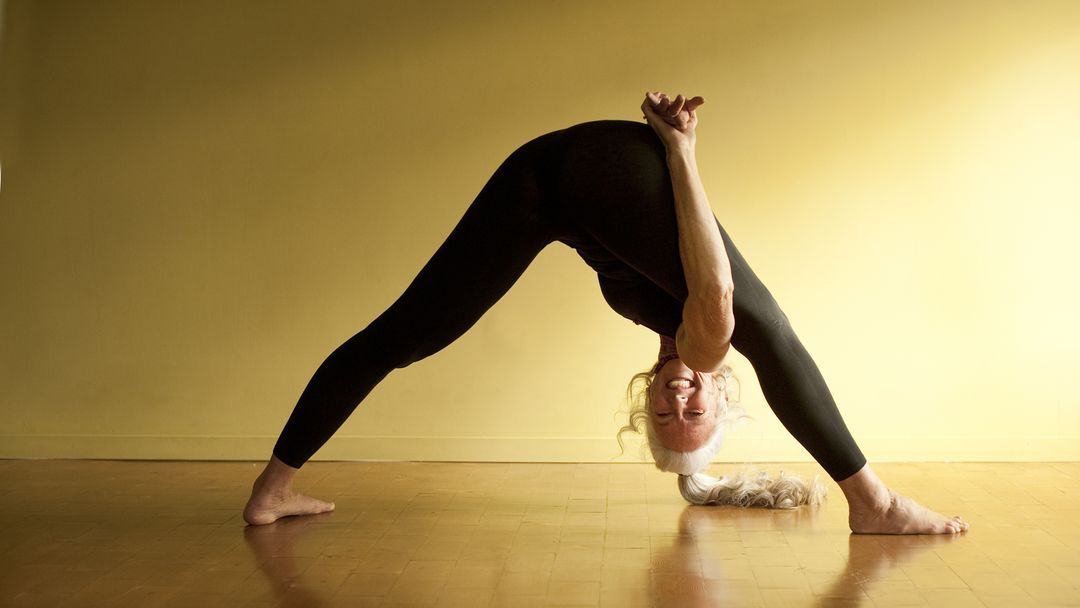
This tortoise (kurmasana) to firefly (tittibhasana) transition requires patience and play, allowing for self-exploration, building physical strength, testing mental limits and even having a bit of fun.
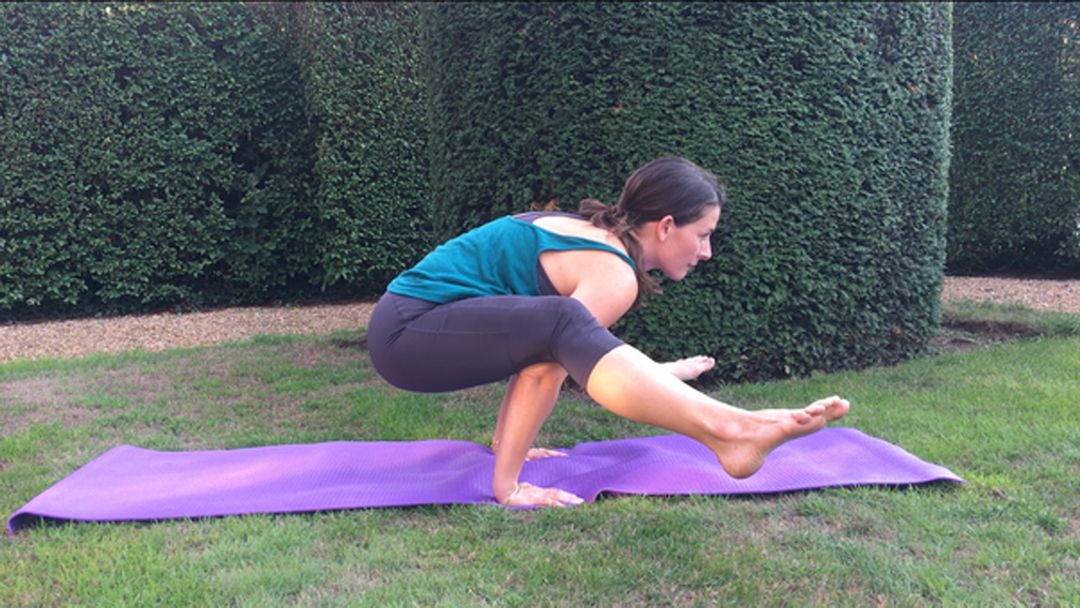
In aspiring to be consistent with our yoga practice, we need to consciously make space, be open to potentially breaking old habits, and rejoice in the possibility of creating new ones. And although we do need the drive to stay committed and disciplined, being consistent enables us to approach our mat with confidence and playfulness. Here’s why
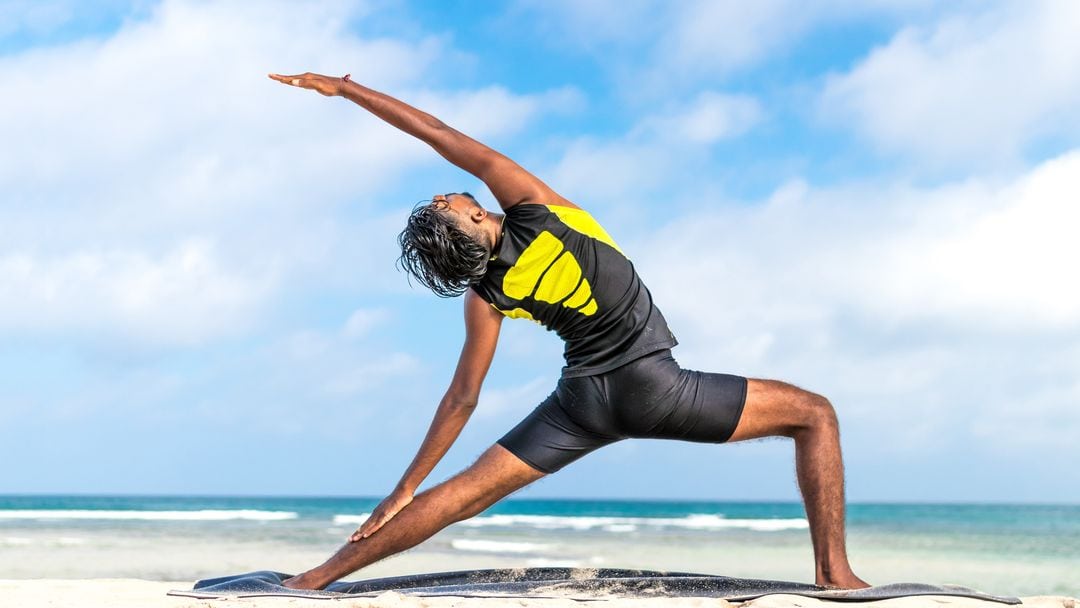
So many asanas can become much more accessible and safe to practice when you grab a prop for assistance. Props can help to get your body into a safe alignment, make the asana more comfortable for your anatomy, and just add a little more oomf. So, let’s get into it… how to use a chair for take off into firefly pose (tittibhasana)!
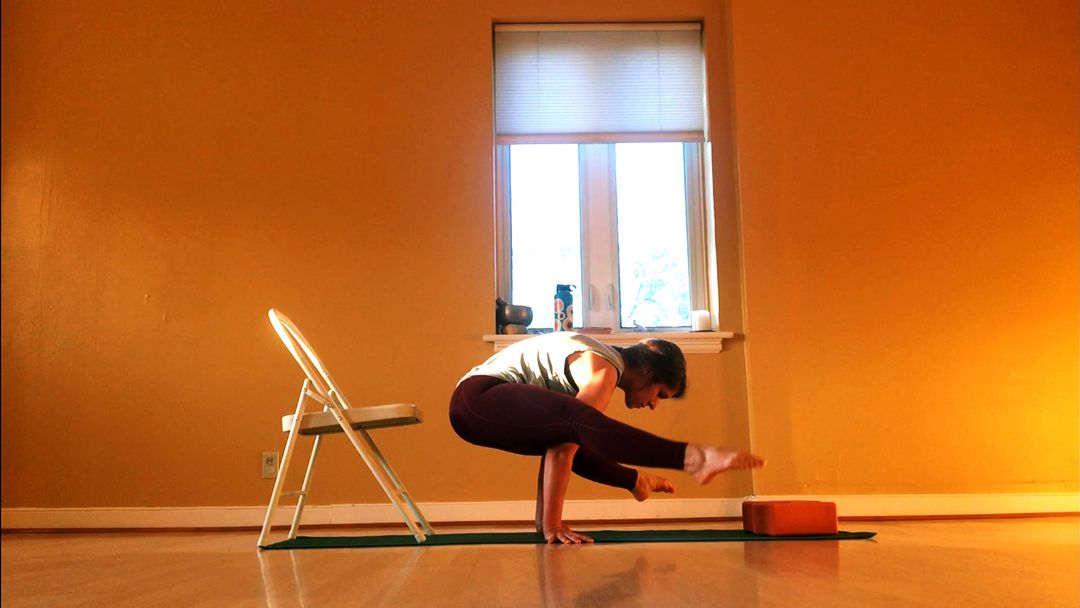
Learn how to stand on your head with 5 simple and unique tools, tips, and tricks.
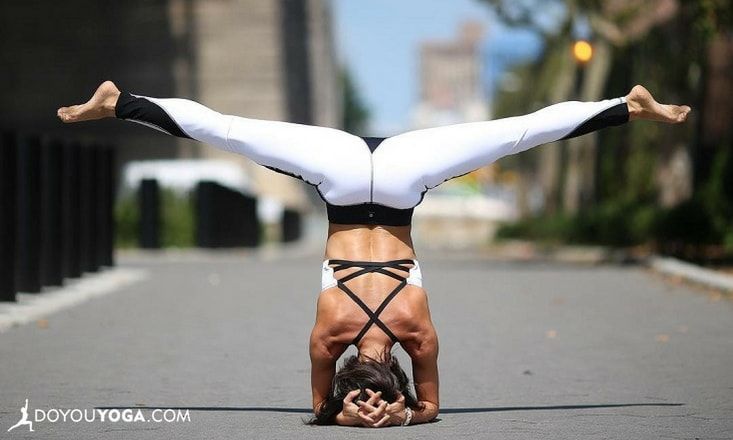
A delicious slow-mo yoga series to stretch out all those muscles groups you worked after an intense workout.
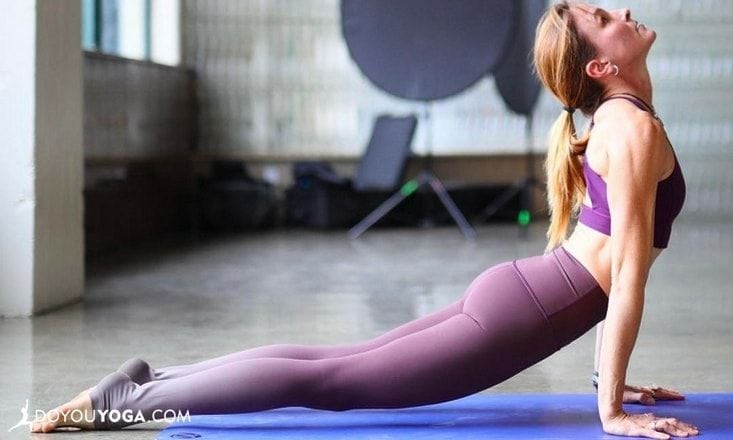
Like any other prop, the wall is a great tool to help expand a yoga practice. Look at five useful uses for a wall to improve a yogis backbend practice while being creative.
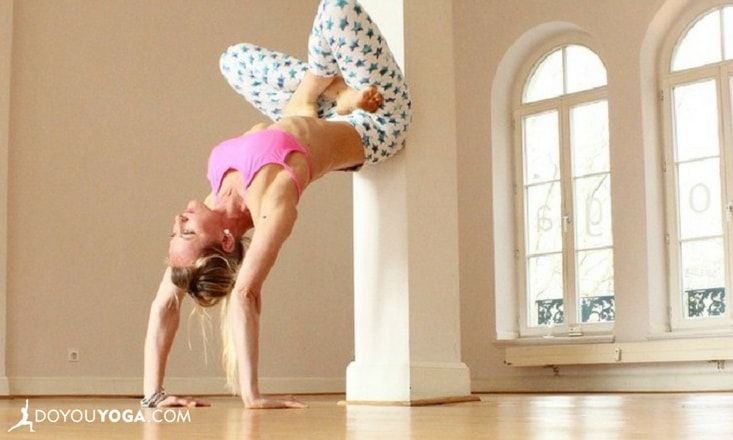
It is easy to assume things about yoga culture, yoga practice and yoga in general. Think outside the assumption box by exploring and reflecting on things we are all tired of hearing about yoga.
